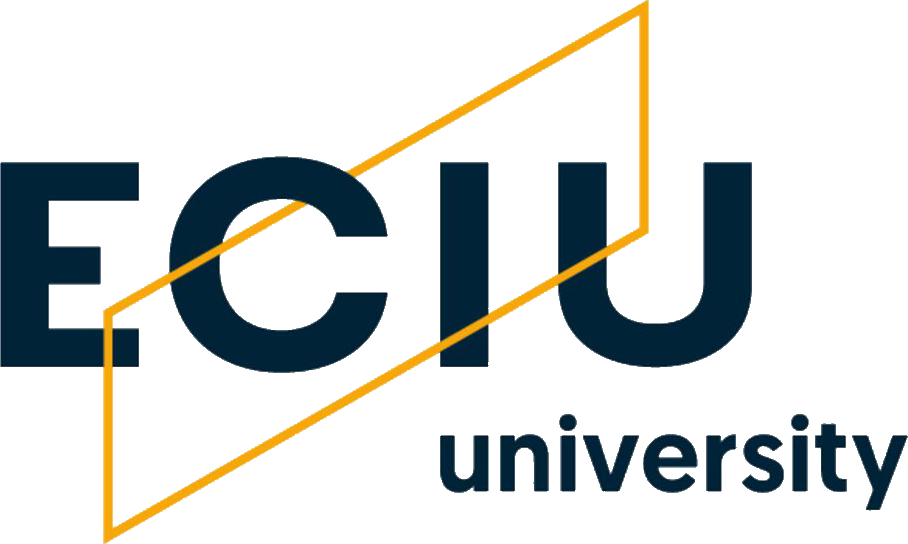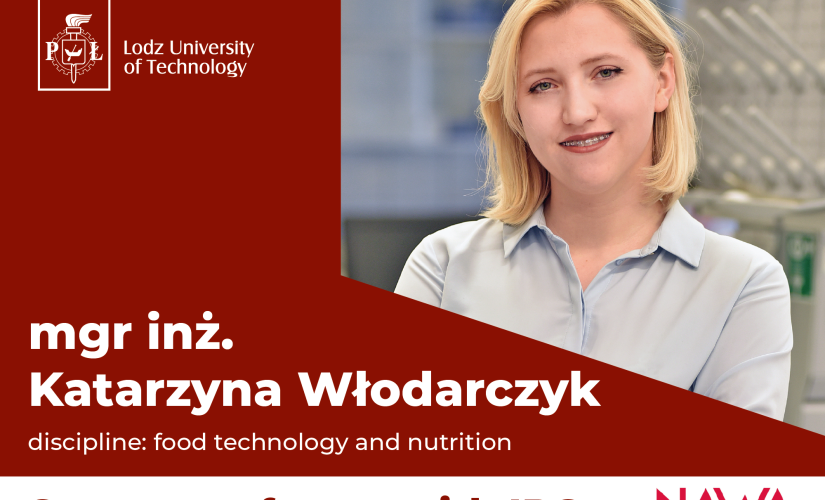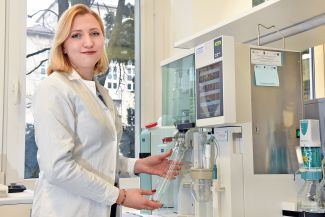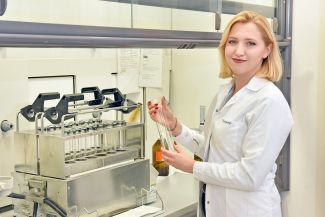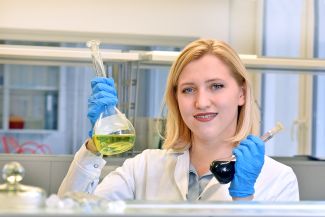What are the food challenges facing scientists today?
I would say that they concern not only scientists, but the agricultural sector in general, as well as food producers and, consequently, consumers. Let me start perhaps with such a looming challenge for agriculture, which will be to meet the nutritional needs of a population that is growing at a very fast pace. It is estimated that there will be around 10 billion of us in 2050. At the same time, there is no increase in the amount of available arable land, so meeting these upcoming needs will certainly be a huge agricultural and economic challenge. Problems such as these, which we are already facing at the moment, include, for example, phenomena that reduce or worsen the available arable land. These include, for example, soil depletion or erosion, water eutrophication and pollution caused, for example, by excessive use of pesticides or fertilisers. The latter phenomenon is precisely indirectly related to the topic of my research work. Unfortunately, the most common way of fertilising the soil is still the use of artificial fertilisers. The main problem arising from the use of these fertilisers is their low efficiency. It is estimated that processes such as leaching, mineralisation and bioconversion result in 50-70% of the nutrients from fertilisers failing to reach the plants. The use of artificial fertilisers (also known as mineral fertilisers) over long periods of time and in large doses to maintain high levels of food production has already caused numerous environmental problems around the world. Due to surface run-off and the leaching of nutrients from fertilisers, it has also led to them getting into water bodies and consequently also polluting them.
What are the research objectives of your doctorate?
The focus of my work is on the use of nanoparticles as an aid to plant fertilisation. I have chosen to use nano-zinc oxide (nano-ZnO) for my doctorate, and the plants I am researching are tomatoes. The aim of my work is to investigate what effect the use of these nanoparticles can have on plant development and growth, and whether the use of nanoparticles can improve the efficiency of macronutrient uptake by plants.
What is the effect of nanoparticles on plant vegetation?
Unfortunately, it is impossible to answer this question unequivocally. Research has already been conducted in this context for at least two decades. Different nanoparticles and their effects on different plants are being studied, but we do not yet have clear answers. Very often, depending on the concentrations used, nanoparticle formulations improve a number of parameters related to plant development and function, such as antioxidant content, increased number of fruits obtained, faster plant growth, improved photosynthetic efficiency or increased uptake of particular compounds from the soil. There are also studies that indicate that particular nanochemicals in certain concentrations may be toxic to plants. In fact, we still need more data on this subject.
Please describe your research workshop.
My work obviously had to start with a detailed acquaintance with the available research literature, so I decided to study specific nanoparticles, or in my case nano-ZnO, the concentrations at which I would apply them and the plant that was the subject of my research. This also allowed me to choose the right conditions for growing my plants. The next stage of the work was to study the effect of nano-ZnO on, firstly, seed germination and only then on the growth and development of the whole plant. The plants were grown in a phytotron, which is a chamber specially designed for growing plants. In the phytotron, we have the possibility of regulating and ensuring optimal conditions for the plants, such as light, air humidity and ambient temperature. After cultivation, I subjected the plants and their fruit to a number of tests, starting with the content of plant pigments and ending with the testing of individual allergens in the fruit.
Why did you choose tomatoes for your research?
Tomatoes were chosen because, firstly, they are one of the most popular crops on almost all continents. Secondly, they are important for our daily diet as a rich source of antioxidants and vitamins. I hope that my results will contribute significantly to our knowledge on the use of nanotechnology in agriculture. However, I believe that a few more years of research on this topic are necessary to implement these results in cultivation outside the laboratory environment.
Among the questions you researched what is the effect of fertilisation on allergy. What can you say about the results?
Initially, I can say that relatively little research has been carried out in this area. The only more extensive study was carried out by the staff of our Institute, by the way, but it compared the effect of conventional fertilisation with organic fertilisation on tomatoes and, consequently, on the amount of allergens in the fruit. As far as my research is concerned, there are indeed differences. In my study, I used, among others, the enzyme-linked immunosorbent assay (ELISA) and in the case of one allergen, the application of nanoparticles slightly reduced its presence in the fruit; unfortunately, for another allergen, the results were the opposite. Nevertheless, it can be seen that the method of fertilisation can influence this parameter, and as many people are currently struggling with allergies, I think these are very important results.
What are the development opportunities for young scientists at IDS?
I, in particular, appreciate the mobility opportunities - internships, which I have taken advantage of myself. This has resulted in participation in several research projects, as well as additional results for my PhD thesis. On the other hand, by participating in scientific conferences, I have had the opportunity to meet other young scientists from all over Poland, which has enabled us to address many of the common problems and topics that a PhD candidate faces.
